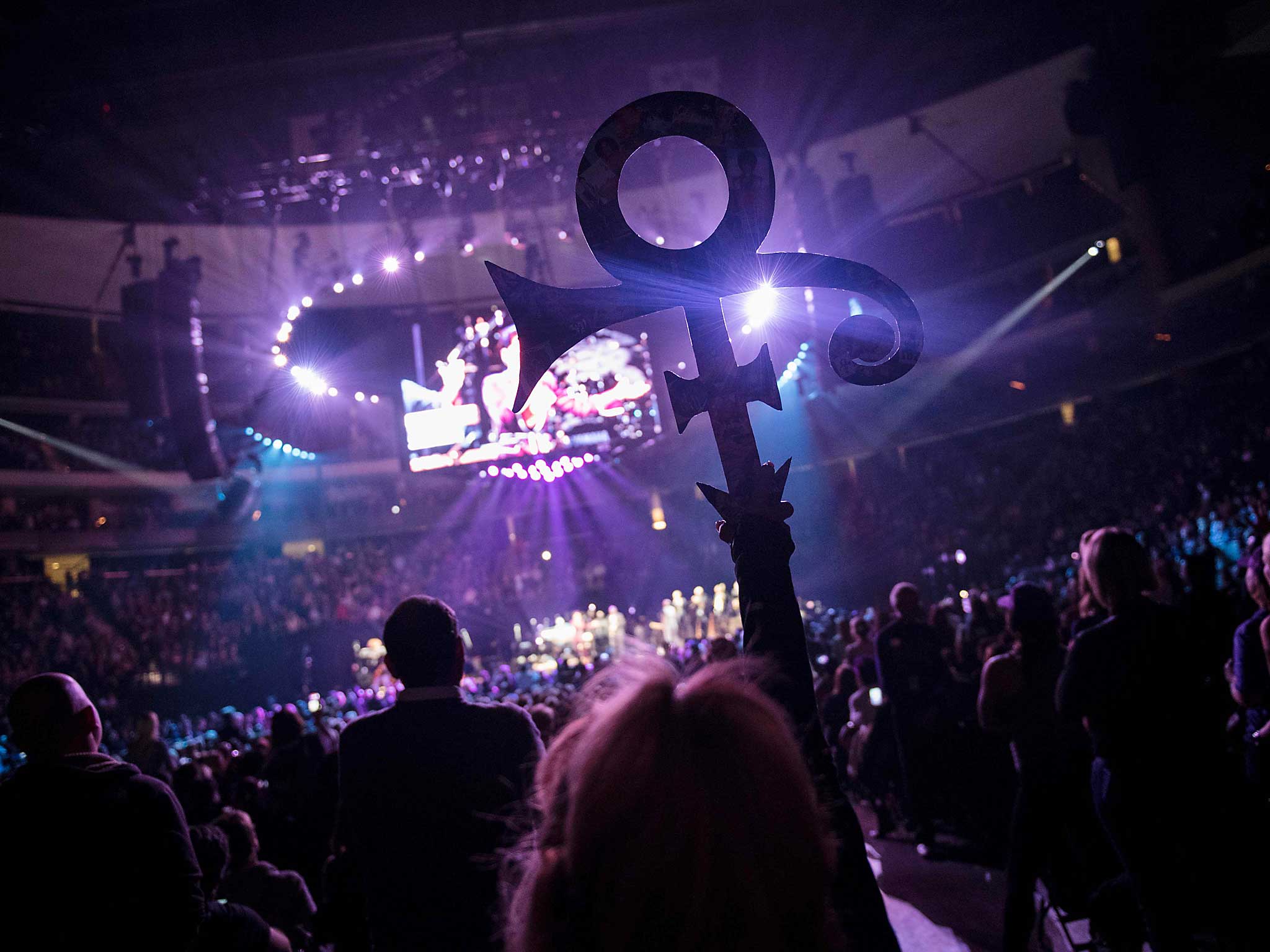Why Prince swapped his name for the 'Love Symbol' 25 years ago
Frustration at feeling shackled by his record label led the Purple One to drastically rebrand, infuriating executives and bewildering reviewers
Today marks exactly 25 years since pop star Prince changed his name to an abstract symbol.
Infuriated by a long-running contract dispute with his record label, Warner Brothers, Prince reached the end of his tether when executives asked him to release fewer albums in 1993.
The singer had put out a new LP every year since the release of his debut For You in 1978 – with the single exception of 1983 – and the Warner marketing department had begun to grow anxious that Prince was flooding the market with new material, overwhelming demand and drawing increasingly indifferent reactions from the critics.
Despite his putting out such all-time classics as 1999 (1982), Purple Rain (1984) and Sign o’ the Times (1987) during that prolific period, the label feared Prince risked losing his mystique and that over-familiarity might breed contempt.
Prince angrily disagreed and began performing with the word “SLAVE” written on his cheek.
A born contrarian, the request that he stem the flow of his creativity proved the last straw and he conceived the symbol as a replacement for his given name, allowing him to regain control of his output without breaking his contract by releasing records under the new alias instead.
“The first step I have taken towards the ultimate goal of emancipation from the chains that bind me to Warner Brothers was to change my name from Prince to (symbol),” he explained in a press statement.

“Prince is the name that my Mother gave me at birth. Warner Brothers took the name, trademarked it, and used it as the main marketing took to promote all of the music I wrote.
“The company owns the name Prince and all related music marketed under Prince. I became merely a pawn used to produce more money for Warner Brothers.”
It was the ultimate anti-commercial provocation with which to confound the suits, who were forced to send out floppy disks to music magazines containing a font that would accommodate the glyph so that the press would be able to continue writing about their star asset. You still can’t type it on an ordinary keyboard. The following is about as close as you can get: O(+>
Fans were perplexed but went along with it, never doubting their hero’s unimpeachable creative instincts, while the press reacted with ridicule, which the performer simply shrugged off with characteristic disdain.
Enjoy unlimited access to 100 million ad-free songs and podcasts with Amazon Music
Sign up now for a 30-day free trial. Terms apply.
ADVERTISEMENT. If you sign up to this service we will earn commission. This revenue helps to fund journalism across The Independent.
Enjoy unlimited access to 100 million ad-free songs and podcasts with Amazon Music
Sign up now for a 30-day free trial. Terms apply.
ADVERTISEMENT. If you sign up to this service we will earn commission. This revenue helps to fund journalism across The Independent.
But one interesting problem remained: how to address a man whose name could not even be pronounced? Journalists commonly opted for “The Artist Formerly Known as Prince” or simply “The Artist” but neither stuck. That was partly the point.
“It is an unpronounceable symbol whose meaning has not been identified. It’s all about thinking in new ways, tuning in 2 a new free-quency,” the Purple One offered, not entirely helpfully.
Prince would later suggest that the glyph “entered his consciousness during meditation” and was inspired by two of his backing dancers, Mayte Garcia (his future wife) and Tara Leigh Patrick (the future Carmen Electra).
In truth, he actually tasked his creative consultants Mitch Monson and Lizz Luce to design it one day at his Paisley Park recording compound in Chanhassen, Minnesota.

Apparently a combination of the astrological symbols for Mars and Venus - commonly used to stand for male and female - the “love symbol” has been interpreted as a reflection of Prince’s androgynous sexuality and rejection of binary gender roles, an idea that has seen him hailed for celebrating trans culture long before LGBT+ concerns achieved mainstream acceptance.
It has also been compared to an ancient Egyptian ankh and even a crucifix. Taken together, the two interpretations suggest a fusion of sex and religion entirely appropriate to the man and his unique brand of sexually-charged pop funk.
He was not the first musician to use a symbol in this way. Guitarist Jimmy Page encouraged his fellow Led Zeppelin bandmates to opt for emblems to represent them on Led Zeppelin IV (1971), Page’s own sigil resembling Arabic scripture but actually representing Saturn, an allusion to his star sign of Capricorn.
Boxer Muhammad Ali meanwhile famously changed his name mid-career, dropping Cassius Clay in 1964 when he converted to Islam as a rejection of what he had come to consider his “slave name”.
Prince, who died in 2016, reverted back to his original moniker in 2000 but continued to use the “love symbol”, memorably during his Super Bowl half-time show in 2007 when he performed “Purple Rain” in the rain on a large central stage built in its image and using a custom electric guitar shaped similarly.
As Ronnie Ro summarised the affair in his 2011 book, Prince: Inside the Music and the Masks: “Prince felt when the lights went down in a concert hall, and he spoke into a microphone, ‘It doesn’t matter what your name is’.”
Join our commenting forum
Join thought-provoking conversations, follow other Independent readers and see their replies
Comments
Bookmark popover
Removed from bookmarks